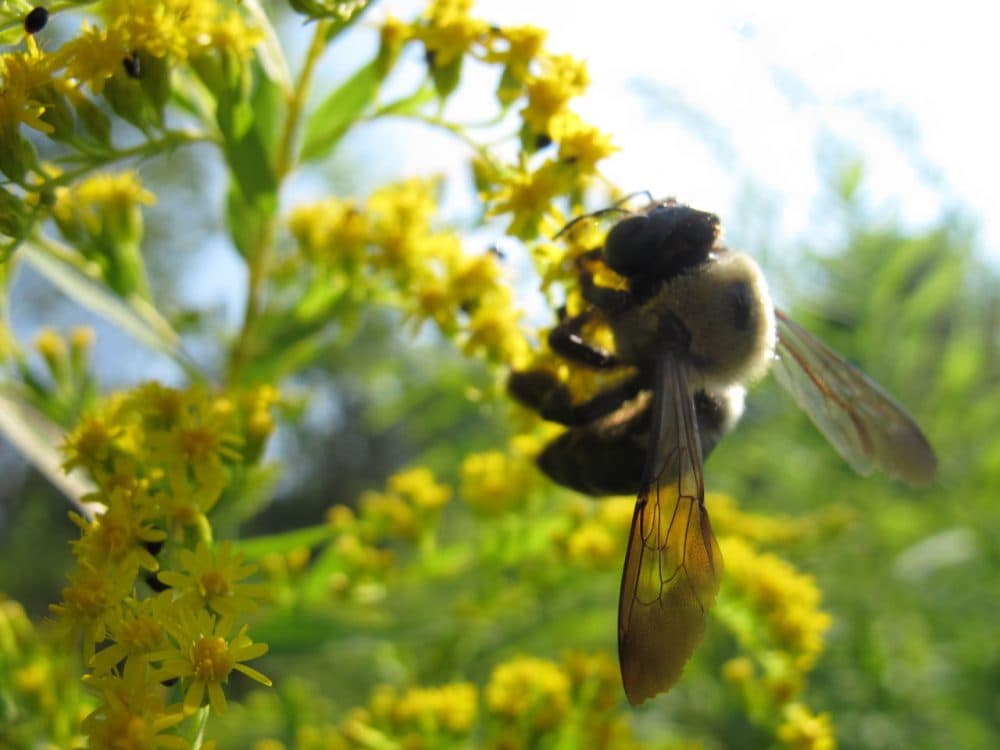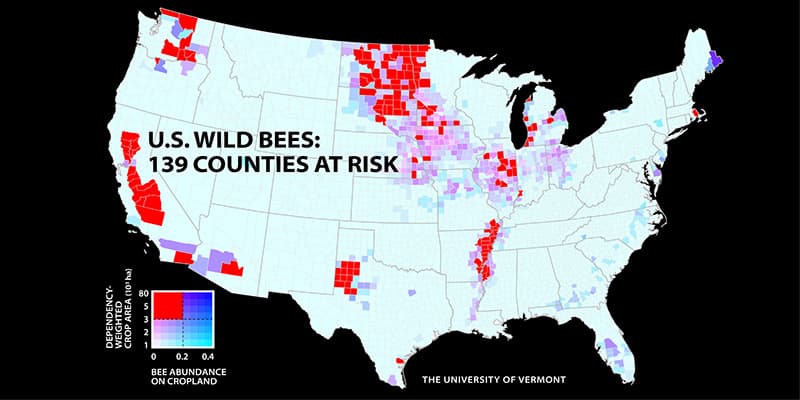Advertisement
Wild Bees Declining In Major Agricultural Areas
Resume
As wild and domesticated bee populations continue to decline, a new study from the University of Vermont's Gund Institute for Ecological Economics shows the regions most affected across the country. The study was led by Insu Koh, a postdoctoral researcher.
Professor Taylor Ricketts, director of the Gund Institute and a senior author of the study, tells Here & Now's Robin Young that agricultural areas are contributing to the decline, even when they need bees more than ever.
"When we intensify agriculture, we take away habitat for bees," Ricketts says, "and often agriculture comes along with pesticides and other chemicals that can reduce populations of bees."
From The Study

Guest
- Taylor Ricketts, director of the Gund Institute for Ecological Economics at the University of Vermont.
This segment aired on December 22, 2015.